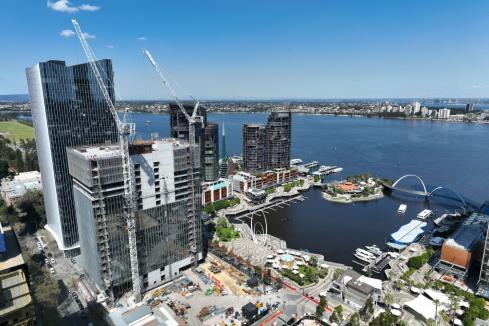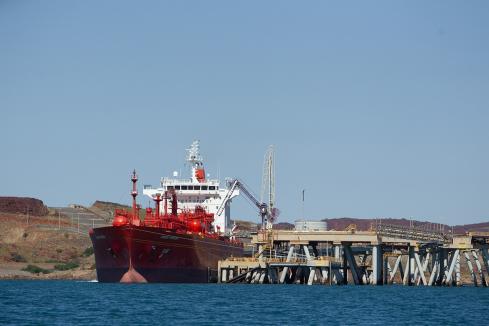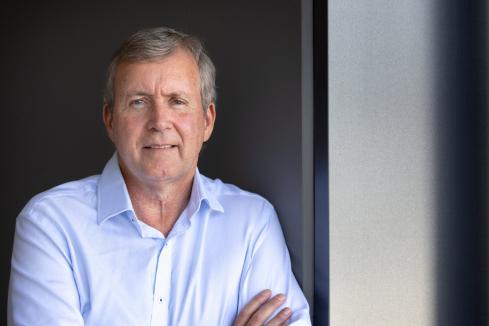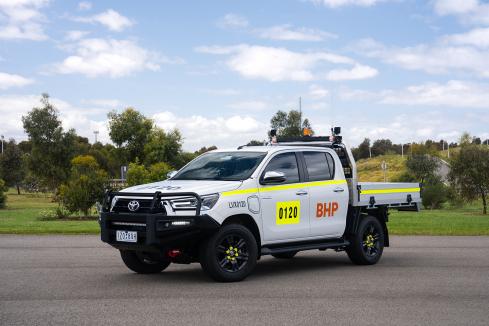WA is poised to double its LNG production, but softer oil prices and global competition for capital mean there is much conjecture about the sector’s future. Click through to see more on our major oil and gas projects feature.

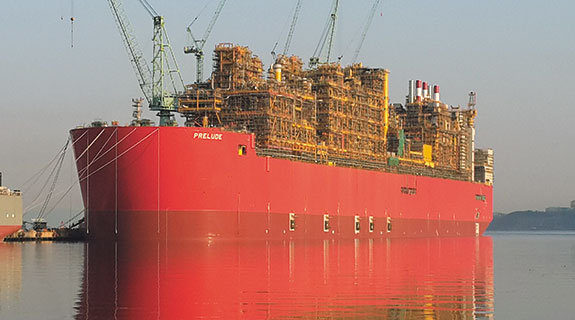
WA is poised to double its LNG production, but softer oil prices and global competition for capital mean there is much conjecture about the sector’s future.
Click here to see the special report.
With the benefit of hindsight, Inpex Corporation’s decision to build its Ichthys LNG plant in Darwin was an omen of things to come for Western Australia.
Since the company pushed ‘go’ in January 2012 on plans to pipe WA gas almost 900 kilometres east, there has not been a final investment decision on a greenfield LNG project in this state.
Instead, a series of projects has been delayed or pushed out into the distant future.
Some of the majors have divested their assets, capital expenditure is falling, and jobs are being lost as the sector transitions to the production phase.
To add insult to injury, the oil price has hovered at roughly half the level it was 12 to 18 months ago, thanks largely to Saudi Arabia turning on the production tap.
However, the long-term view is that energy still has much to offer, and WA stands to be a major industry player.
The state will soon have 11 onshore LNG trains in production, with a doubling of volumes from around 20 million tonnes per annum in 2013-14 to 40mtpa by 2017-18.
For now, the focus is dominated by major projects reaching milestones and coming to completion.
 Earlier this month, Chevron’s Wheatstone neared the 60 per cent progress mark with the installation of the project’s platform topsides.
Earlier this month, Chevron’s Wheatstone neared the 60 per cent progress mark with the installation of the project’s platform topsides.
The 37,000-tonne platform was the largest float-over installation the multinational has ever delivered.
Wheatstone will feature two LNG trains with total production of 8.9mtpa, in addition to a domestic gas plant, with a forecast completion date of late 2016.
Inpex, too, hit a milestone at its shipbuilding facilities in South Korea, with topsides lifted onto its floating production, storage and offloading facility, and the central processing facility.
The Ichthys project is nearing 70 per cent complete, with the two offshore facilities due to be towed to the field in 2016. Meanwhile, concrete has just been poured for the butane storage tanks at the onshore Bladin Point plant near Darwin.
Chevron’s other big facility, the $52 billion Gorgon project is nearing production, earlier this year passing 90 per cent completion, as finalising of systems and commissioning got under way.
Plans are well advanced for the first LNG cargoes to sail from Barrow Island, the hub of the Gorgon project, before the end of the year.
Job losses
Commissioning of the big projects will mean some job losses, with Chevron reportedly to cut almost half of its 4,000 local staff.
Contractors, too, face a bleaker future as a result.
The Gorgon project on Barrow Island has employed almost 8,000 people at the peak of its construction phase.
 While many of those jobs could be lost, it is possible some will move to work on Chevron’s nearby Wheatstone project, or projects such as Ichthys. That option has been floated by contractor Kentz.
While many of those jobs could be lost, it is possible some will move to work on Chevron’s nearby Wheatstone project, or projects such as Ichthys. That option has been floated by contractor Kentz.
Woodside Petroleum, too, has reduced its workforce, with cuts of 300 staff in late March. That followed cutbacks last year after a rethink of its planned Browse project.
However, the significant number of experienced professionals and skilled workers from the resources and energy industry looking for jobs could mean a substantial reduction in costs for projects based in WA.
Some pundits suggest such a cost reduction, combined with a sustained fall in the Australian dollar, could bring WA projects forward as viable alternatives to other global options competing for capital.
Then again, some operators will be only too aware of the boom time construction costs and labour issues.
Float option
The alternative for otherwise uneconomic projects is floating LNG plants.
Shell has led the way with floating LNG technology, and its Prelude platform is well into construction phase, according to a spokesperson for Shell.
Drilling of the field’s wells is about half complete, while subsea systems installation is under way.
With production forecast to start in 2017, Prelude might be the final greenfields LNG project in WA to come online for some time, although Browse FLNG is the next likely starter.
The Woodside-led Browse is anticipated to enter the front-end engineering design phase in the middle of this year, followed by a final investment decision in 2016.
Shell is a joint venture partner in Browse, and the company’s technology has been selected for use in the project.
FLNG has also been considered in other proposed projects such as Scarborough, which looks unlikely for the time being.
That development is co-owned by BHP Billiton and ExxonMobil, featuring a field located a great distance from the coast – a key factor that will influence the economics of FLNG.
The number of wells and access to a deepwater port are two other considerations.
“FLNG has been developed as a means of developing offshore gas fields that otherwise would be too costly or difficult for economic development,” the Shell spokesperson said.
“Having the facility located at the gas field reduces materials usage, and impact on land and seabed.”
Money moves
Shell, which recently made the sector’s biggest acquisition in years with its move to purchase BG Group, could be the key player influencing the direction of the state’s LNG market in the next decade.
The bold bid, worth around $90 billion, would give Shell control of the QCLNG project based on Queensland’s Curtis Island, if approved.
With assorted other assets in the deal, including in East Africa, it means the company would become the world’s biggest LNG producer, with double the output of its nearest competitors, Chevron and ExxonMobil.
Shell’s move will boost its presence in Australia, something the company pursued in 2001 when its bid to acquire Woodside was blocked by the then federal government.
The deal raises two strategic possibilities.
It could herald a wave of new merger and acquisition activity, while also creating discussion about the emphasis Shell will place on WA after the Prelude project enters production.
Allen & Overy oil and gas partner Angus Jones said smaller companies needing capital injections and facing funding difficulties could look to sell-down part interests in projects.
“Often this part of the cycle is good for M&A,” he said.
“I think we will see a pickup in M&A activity in the second half of this year as some of the larger players look to capitalise on what they see as value in the longer term.”
Private equity players could be on the hunt, after Kerry Stokes-chaired Seven Group acquired Nexus Energy and took stakes in Drillsearch Energy and Beach Energy, while KKR is rumoured to be interested in Cooper Basin producers.
Beach Energy holds an interest in the Burnside discovery in the Browse Basin and operates permits in the Bonaparte Basin.
Papua New Guinea-focused InterOil and Oil Search have been touted as targets, with giant Total potentially pursuing InterOil.
Perth-based Buru Energy might also feature in an industry reshuffle, with Buru’s share price falling dramatically to around 50 cents from highs of more than $3 in 2012.
Conversely, Apache Corporation has exited WA in emphatic fashion, with its shares in Wheatstone and the Julimar/Brunello fields part of a $3 billion deal with Woodside.
In a further deal, a consortium led by Brookfield and Macquarie and including Perth businesswoman Angela Bennett bought out the remaining $2.1 billion of Apache’s local holdings.
Gas strategy
Shell chief financial officer Simon Henry acknowledged the company’s strategy was geared towards deepwater and LNG projects when presenting its recent quarterly report.
“Both of these are growth priorities for Shell, and areas where the company is already one of the industry leaders,” Mr Henry said.
Priority projects for the company would include newly acquired LNG developments in East Africa and North America, Mr Henry reportedly said in a later discussion with industry analysts.
Shell has been active in selling Australian upstream assets, last year exiting Wheatstone and earlier this year shelving its Arrow project in Queensland, the latter of which may now potentially be included in QCLNG.
Yet despite slashing capital investment globally, it remains committed to its flagship Prelude project.
Shell also has long-term development options.
One such choice for the Dutch-headquartered company could be the Crux field, which has been touted as an extension to the Prelude project, while it also holds a stake in Woodside’s Sunrise, currently on the backburner.
Brownfields
Despite the rough outlook for greenfields projects, extensions to existing operations are looking favourable and featuring more prominently.
Woodside has three under construction, with Pluto-Xena expected to enter production later this year.
As part of the North West Shelf Venture, the Greater Western Flank-1 and Persephone expansions are on the horizon, with GWF-1 due for completion early next year and Persephone in early 2018.
Woodside additionally featured recently in a potential deal with US company Hess, which is investigating using North West Shelf onshore processing facilities in a $7 billion development of its Equus field.
In its annual report, Hess said there was still some way to go before a decision on the project.
“Successful negotiation of a binding agreement with the third party liquefaction partner is necessary before the corporation can execute a gas sales agreement and sanction development of the project,” the company said.
If a trend for third-party processing emerges, Woodside could also use its Pluto facility, an option it has previously floated.












